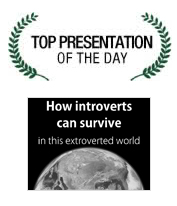I’ve collected over two hundred of the best content strategy and content design resources below. My goal is to make it easy for you to learn about the field of content strategy, find content strategists and blogs to follow, and, hopefully, start contributing to our community.
The people I mention are experts in the field of content strategy—I’m so grateful to them for sharing their ideas and experiences with us. But I’m even more excited for you to join our conversation. Let’s get started!
Definition – Books – Journals – Blogs/Websites – Articles – Events – Forums – More lists
A Definition of Content Strategy
What is “content strategy”? Is content strategy the same as content marketing? No, never. Is content strategy just a weak, watered-down form of design or information architecture? No, not at all.

The core components that Brain Traffic considers for every content strategy.
Graphic © Brain Traffic
Kristina Halvorson (@Halvorson), founder/CEO of Brain Traffic, states in A List Apart that “Content strategy plans for the creation, publication, and governance of useful, usable content.”
I think the word plans plays a key role in that definition. Planning is an essential skill for content strategists, who often do quite a bit of research within organizations to examine workflow, standards, governance, process design, publishing systems, and several other factors that go into the second part of Kristina’s definition: “…the creation, publication, and governance of useful, usable content.”
But content strategists do more than just plan. That’s why I love Kristina’s distinction between the words useful and usable. A content experience must be both in order to be truly successful. Making content (and content systems) both useful and usable is where content strategy turns to implementation.
Rachel Lovinger (@rlovinger), experience director at Razorfish, adds to this definition in Boxes and Arrows when she states that content strategists use “words and data to create unambiguous content that supports meaningful, interactive experiences.”
Note that here she specifically references both language and data, which indicates that we’re talking about “big-C” Content, not just blocks of text. It’s also clear that we’re talking about holistic experiences and how content enables experiences that help people succeed at their goals.
Rachel adds that “content strategy is to copywriting as information architecture is to design,” which helps us dispel the myth that all content strategists care about is text. We care about content as experience, which is why we focus on standards, voice and tone, governance, content inventories and audits, workflows, service design, systems and processes, metadata design, content modeling, delivery channels, and so on.
Remember: useful and usable. This is why content strategists aren’t content marketers. This is why content strategy isn’t the same as (nor anything like) content marketing.
Furthermore, content strategists aren’t just “weak information architects” or “weak designers” as we’re referred to in some communities. Rather, content strategists often take care of the elements of infrastructure and experience that those disciplines tend to shrug off.
Content strategists use language, data, and systems to build better experiences for people than either IAs or designers can working by themselves. Ideally, all three disciplines work together as part of a user experience team that puts the Why before the How.
So yes, we’re designers. Yes, we’re information architects. And yes, we’re builders, too. This is what I mean when I say “content strategy”. Continue reading →










